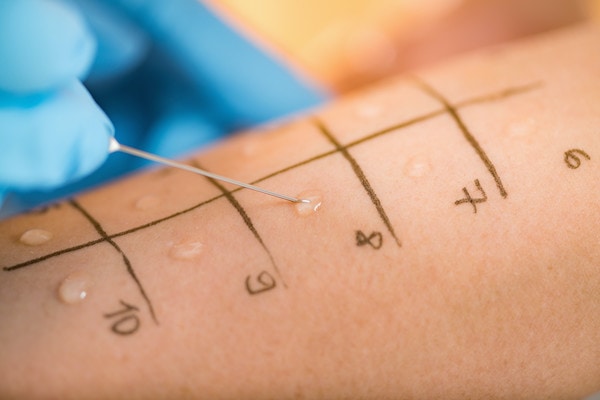AOAC 991.02 Peanut Protein Detection in Food
The AOAC International method 991.02 is a widely recognized protocol for detecting peanut proteins in food products, ensuring compliance with allergen labeling regulations and safeguarding consumers with peanut allergies. This method provides a robust framework for identifying trace amounts of peanuts in various matrixes, from processed foods to raw ingredients.
The importance of this test cannot be overstated, especially given the increasing prevalence of food allergies worldwide. Peanut allergy alone affects approximately 1-2% of the global population, making it one of the most common and severe food allergens. Proper labeling and control measures are crucial to prevent accidental consumption by those with peanut sensitivities.
The AOAC 991.02 method is based on immunoassay technology, which leverages monoclonal antibodies specifically designed to bind to specific epitopes of the peanut protein allergens. This approach ensures high specificity and sensitivity, even in trace quantities as low as 5 ppm (parts per million). The test can be performed using either a commercial kit or in-house protocols developed according to the specified guidelines.
The procedure involves several key steps: specimen preparation, extraction of peanut proteins, sample dilution if necessary, and finally, the immunoassay analysis. Specimen preparation is critical; it typically includes grinding, homogenization, and filtration to ensure a consistent matrix for testing. Extraction methods may vary based on the matrix but generally involve water or aqueous solutions that can dissolve the target allergens.
Once extracted, the sample undergoes dilution if the concentration exceeds the method's detection limit. This step is crucial as it ensures accurate measurement without interfering with the immunoassay process. Following extraction and possibly dilution, the sample is ready for analysis using an automated immunoassay machine or a lateral flow device.
The test results are reported in terms of peanut protein concentration (e.g., ppb or ppm). The AOAC 991.02 method allows for both quantitative and qualitative assessments. Quantitative data is particularly useful for manufacturers looking to ensure compliance with regulatory limits, while qualitative data can provide a yes/no answer on the presence of peanuts.
To further enhance reliability, it's recommended to perform replicate tests on each sample. This practice helps minimize errors due to variability in specimen preparation or machine calibration. Additionally, maintaining a consistent workflow and following strict quality control measures are essential for reproducibility and accuracy.
The AOAC 991.02 method is not only reliable but also highly versatile, capable of detecting peanuts in various food products including baked goods, snacks, cereals, and even pet foods. Its application extends beyond just labeling compliance; it plays a vital role in maintaining product integrity and trust with consumers.
| Parameter | Description |
|---|---|
| Peanut protein concentration limit | 5 ppm (parts per million) |
| Sensitivity of the test | Detected down to 1 ppm |
| Type of antibodies used | Monoclonal antibodies specific to peanut allergens |
Scope and Methodology
The AOAC International method 991.02 outlines a standardized procedure for detecting peanut proteins in food products. The scope of this method includes the analysis of various food matrices such as processed foods, raw ingredients, and pet foods. It is particularly useful for ensuring compliance with allergen labeling regulations.
- Specimen preparation: Grinding, homogenization, and filtration
- Extraction: Using water or aqueous solutions to dissolve peanut proteins
- Dilution: Adjusting sample concentration for accurate measurement
- Analysis: Immunoassay using monoclonal antibodies specific to peanut allergens
Industry Applications
The AOAC 991.02 method has broad applications across the food and feed industries, particularly in sectors where allergen detection is critical. Quality managers, compliance officers, R&D engineers, and procurement teams rely on this test to ensure product safety and regulatory compliance.
- Processed foods: Baked goods, snacks, cereals
- Pet food manufacturing: Ensuring ingredient purity in pet products
- Retail distribution: Verification of allergen-free claims on packaging
- R&D: Monitoring the effectiveness of allergen removal processes during product development
Competitive Advantage and Market Impact
Adopting AOAC 991.02 provides significant competitive advantages in the food and feed industry by ensuring product safety and compliance with stringent regulations. This method not only enhances consumer trust but also protects brands from potential recalls or legal actions.
- Enhanced reputation: Demonstrating a commitment to allergen-free products
- Increased market share: Meeting the growing demand for allergen-sensitive food options
- Reduced risk of litigation: Avoiding penalties associated with non-compliance
- Improved operational efficiency: Streamlined testing processes and reduced errors





